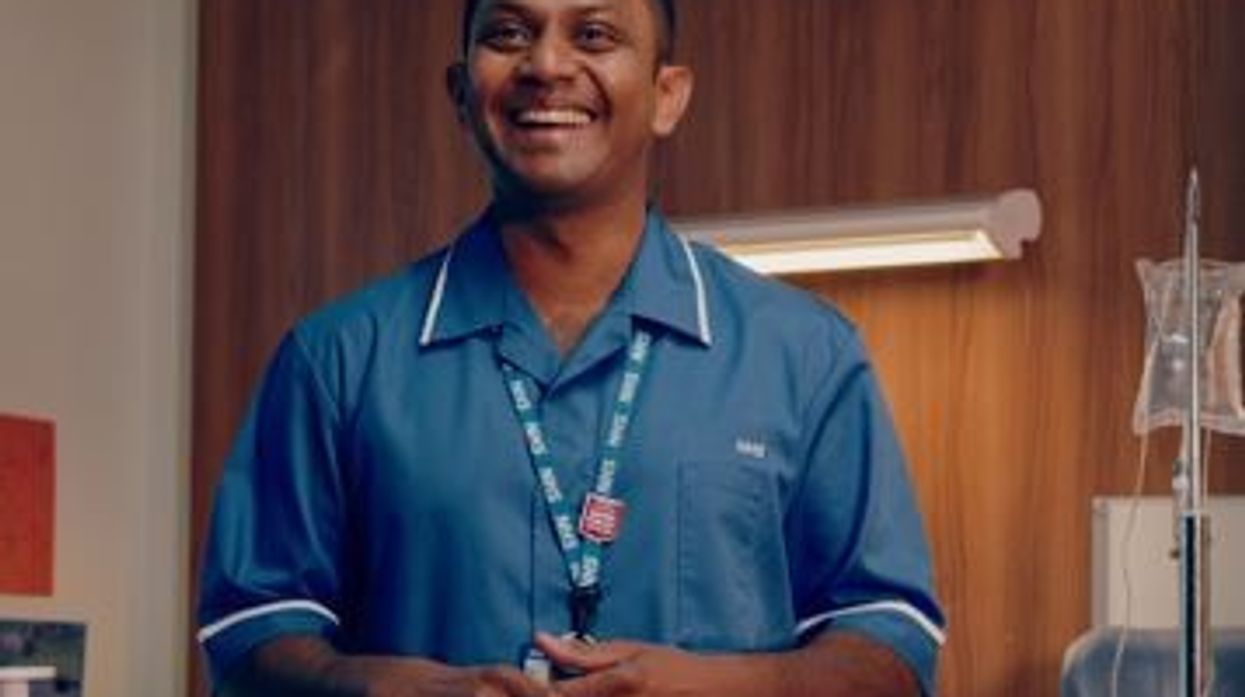THE NHS offers amazing opportunities to be a part of its inspiring team and kickstart a rewarding and illustrious career.
With more than 350 varied and rewarding roles to choose from, the UK Government’s investment in better pay, and one of the UK’s best pension plans, the NHS offers you an opportunity to make a real difference to people’s lives every day. The NHS is currently recruiting for entry-level healthcare support workers, degree-level nursing, allied health professionals and many such job openings across England.
To find your ideal role, visit the NHS ‘Health Careers’ website and sign up to receive more information.
The NHS offers amazing opportunities to be a part of its inspiring team and kick start an inspiring and illustrious career. With more than 350 varied and rewarding roles to choose from, the UK Government’s investment in better pay, and one of the UK’s best pension plans, the NHS offers you an opportunity to make a real difference to people’s lives every day. The NHS is currently recruiting for entry level healthcare support workers, degree level nursing, allied health professionals and many such job openings across England. To find your ideal role, visit the NHS ‘Health Careers’ website and sign up to receive more information.
The NHS is Britain’s single biggest employer, offering more than 350 exciting, varied, valued, and rewarding roles.
Whatever your skill, potential, qualification or interest, there is an opportunity for you in the NHS. You could work directly with patients, in hospitals, ambulance trusts or in the community, develop skills, become an expert or be a part of a unique multi-disciplinary team.
Working with NHS has its perks. Besides the feeling of making a true difference to someone’s life, it offers competitive salaries, opportunity of career progression as well as wellbeing support, if needed.
For example, as a newly qualified nurse, you will earn a minimum of £28,407 at band 5. And you can apply for up to £8,000 a year to help fund your studies. Since September 2020, a new, non-repayable training grant has been available. This is at least £5,000 per academic year for nursing and midwifery courses and further funding of up to £3,000 per academic year for eligible students. Healthcare support workers earn a starting salary of £22,383. There may also be opportunities to earn additional payments for working oncall, overtime, or unsocial hours.
You will also enjoy one of the best pension schemes in the UK with your employer contributing the equivalent of an extra 20.6% of your salary to help meet the costs of your pension benefit.
‘It’s only through challenges that you receive bigger rewards’
NINA JASPAL, 30, is a Kaizen Promotion office specialist and a former cardiac nurse practitioner at the University Hospitals Coventry and Warwickshire (UHCW) NHS Trust.
Nina is the eldest of four siblings, and her sister is training to be a doctor. Growing up in Coventry, Nina looked after her ageing grandparents, which made her realise she could choose nursing as a career option.
“When I finished my A-levels, I first didn’t know what I wanted to do. But our dad had instilled the importance of education, hard work and perseverance in us, so I thought nursing could be a beneficial and rewarding career for me.
“I did a BSc in Adult Nursing at the University of Stirling before I moved back home and started a job as a cardiac nurse in Coventry,” she said.
“I worked clinically as a nurse for eight years, and I worked my way up the ranks. I used to work in the cardiology wards, coronary care unit and in the Cath Lab. I then did further training and worked for two years as a cardiac nurse practitioner, including in the A&E.”
Talking about opportunities in the NHS and job satisfaction, Nina said, “There are so many different avenues that nursing offers. It’s not just all clinical. You can go into leadership roles, management, patient safety, improvement – there are so many possibilities.

“Delivering care to patients is an absolute privilege. The teamwork is second to none and there are no days that are the same.
“As a cardiac nurse, I loved spending time with patients and delivering excellent care. It was so rewarding to witness their recovery, and it usually happens so quickly, right in front of your eyes.
“It’s also about being a role model, delivering day-to-day care and training other junior members of staff – all of which are so important along the way. My new role is also about inspiring staff and empowering them to want to make a bigger difference.”
In her current role, Nina works with the whole multidisciplinary team in the organisation, both clinical and non-clinical.
“I’ve done quality improvement projects within my nursing career, and I also did a secondment with NHS Horizon,” she said.
“I worked at national level for six months, looking at large-scale changes and how they were implemented, and how policies were created and delivered to local organisations. I really enjoyed that. And I also did six months to coordinate with the Kaizen Promotion office team, which was about care improvement.
“But this was locally led and all about empowering the people that worked on the wards to deliver care. It was amazing to have both opportunities at the same time, to really seek how we could deliver better services for patients and how I could personally do more to empower other staff that I worked alongside.”
Asked what she loved about her job, Nina smiled and said, “Being able to facilitate and change people’s thinking. It is quite difficult to change things that have always been done in a certain way.
“We’re working with human behaviour here and that can be challenging at times, but it’s very rewarding when you bring people together and deliver better care for patients.”
Besides her current role in the NHS, Nina is also actively involved in the community and is trying to raise awareness about cardiac health within the Asian community.
She explained, “My role as a cardiac nurse involved being on call for patients that had heart attacks. And I found there were a lot of younger patients, between 30 and 45 years old, and they were of Asian descent.
“So, I reached out to British Sikh Nurses, teamed up with other member nurses and organised cardiovascular health education and CPR training for the community to ‘restart their heart’. We go to local Gurdwaras and deliver CPR workshops and cardiovascular health education programmes and we’ve probably so far delivered this training to around 100 people.”
Encouraging others to join the NHS, she said, “Take the opportunity and, remember, no question is a silly question. If there are things you don’t know, there are professional courses and conferences you can attend. There are always people around you who have been through similar situations. No matter what level you are in, you are always going to face challenges.
“But the most important thing is to persevere, because it’s only through challenges that you will receive bigger rewards.
Search ‘NHS Careers’ to find out more or visit https://www.healthcareers.nhs.uk












